
Finding the right fabric for your project is the most difficult and most important, this article can help you find the best fabric for your project。
Printing textiles is a complex process that requires careful consideration and planning.
The best way to choose a fabric, is to get a sample book.
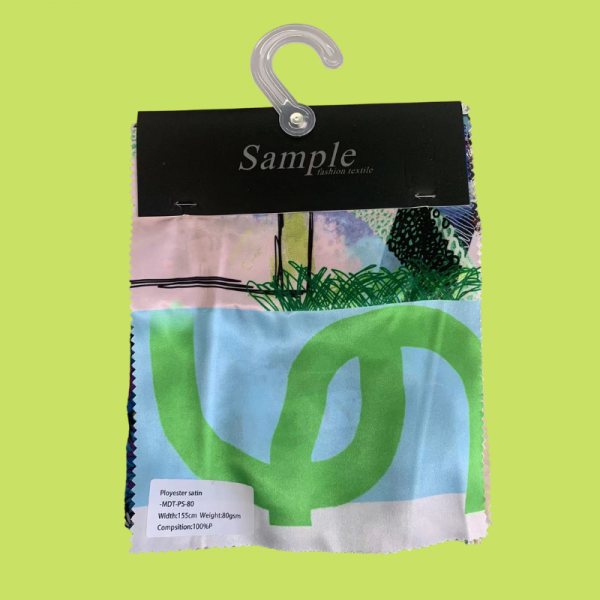
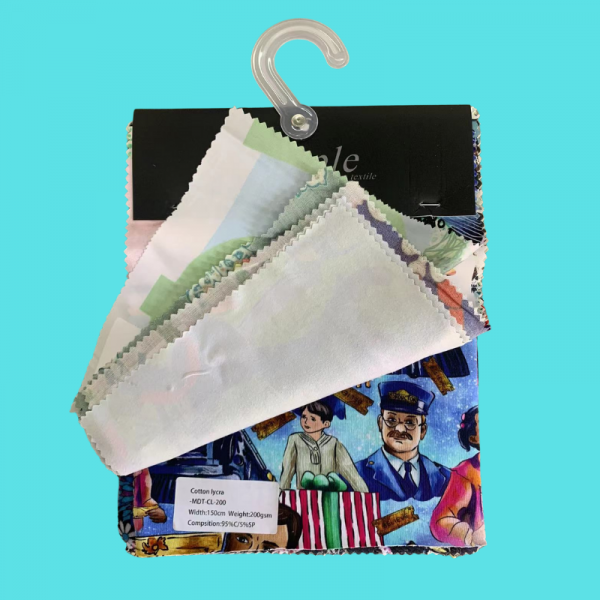
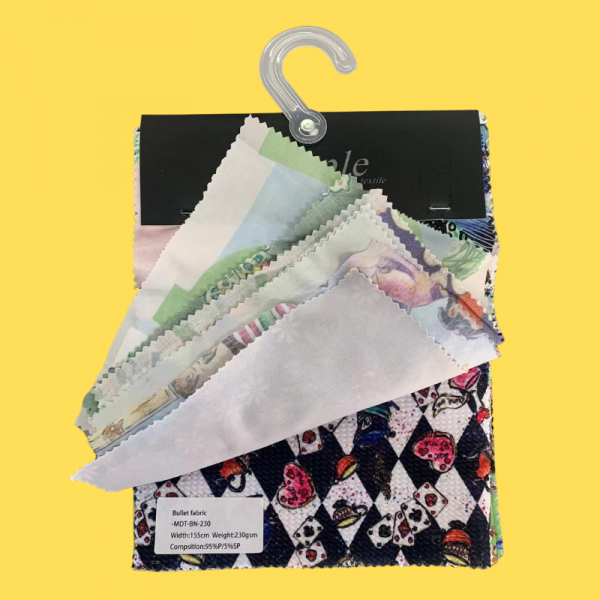
Benefits of Obtaining Samples
Obtaining samples is at the heart of the printed textiles process and offers the following benefits:
1. Check the quality of the material. Before going into mass production, the quality of the material must be tested. Samples can help identify any defects or issues with the material and inform decision-making.
2. Evaluate the color accuracy of the print. Samples can be used to evaluate the color accuracy of a print, which is critical to achieving the desired design and expected results.
3. Cost-effectiveness. Obtaining samples is a cost-effective way to test material quality and color accuracy without committing to mass production.
4. Generate ideas and inspiration. Samples can inspire new design ideas and help identify potential elements during the creative process to incorporate into the final product.
5. Build relationships with suppliers. Requesting samples builds relationships with textile suppliers and enables the development of a network of reliable suppliers that provide high-quality materials.
Printed fabrics are used in a variety of ways, here are some common uses:
1.Clothing:
Printing and dyeing are important processes for making all kinds of clothing, such as T-shirts, shirts, skirts, etc.
Shirts
There are many kinds of fabrics commonly used in shirts, and different fabrics can be selected according to different needs. Some of the more common shirt fabrics are listed below:
- Cotton fabric: soft, good moisture absorption, good air permeability, comfortable to wear, not easy to generate static electricity.
- Pure linen fabric: It has excellent air permeability, good skin-friendly, and can adjust humidity, suitable for summer wear, but it is easy to wrinkle and needs to be ironed.
- Cotton polyester fabric: This kind of fabric not only has the advantages of cotton, but also has the characteristics of durability and wrinkle resistance of polyester.
- Thin thread material: the advantages are soft, comfortable, good skin touch, light and thin texture, excellent air permeability, and it is the star fabric of summer shirts.
- Filament fabric: soft texture, comfortable texture, not easy to wrinkle, easy to straighten out, suitable for customizing high-end business shirts.
Jackets
A jacket is a lightweight top with a wide range of uses, so the choice of fabric for the jacket is also very important. Here are a few fabrics that are suitable for jackets:
- Nylon or polyester fabric: which is wear-resistant, waterproof and windproof, suitable for outdoor sports.
- Cotton fabrics: suitable for spring and autumn wear, warm and comfortable, but not as waterproof and windproof as nylon or polyester fabrics.
- Fleece fabric: Fleece fabric has a good thermal effect and texture, suitable for winter wear.
- Blended fabrics: Blended fabrics can take into account the advantages of various fabrics, such as polyester fiber and cotton blended fabrics, which have good warmth retention and breathability.
Scarves
A scarf is a commonly used warming accessory, and choosing the right fabric is very important. Here are some suitable fabrics for scarves:
- Cotton and linen: This fabric is breathable and very light and soft, making it suitable for autumn and spring.
- Silk fabric: Silk fabric is soft and smooth, feels very good, and is also very warm, suitable for scarves in autumn and spring.
- Viscose fabric: This fabric is soft and has a certain warmth retention function, which is very suitable for making scarves in autumn and spring.
2.Home decoration:
Printed fabrics are widely used in curtains, bedding, sofa covers and other home decorations, providing more styles and design options.
Upholstery
Upholstery refers to the lining material of furniture. The fabric of furniture is different, and the choice of lining material is also different.
- Flocked fabric: This fabric is soft, rich in texture, and bright in color, making it ideal for lining sofas, chairs, and other furniture.
- Suede fabric: This kind of fabric is soft and comfortable, with fine texture, which can well maintain the style and tone of home decoration, and is more suitable as a back cushion fabric for furniture.
- Hemp fabrics: Hemp fabrics have good air permeability, moisture absorption and softness, and are suitable for the lining of sofas, chairs and other furniture.
- Synthetic Fabric: This fabric is strong, durable, easy to clean and maintain, and is suitable for highly-used furniture.
Cushions
Cushion is a commonly used item in home life. Choosing the right fabric is very important to the quality and use effect of the cushion.
- Cotton fabric: Cotton fabric has good air permeability, soft and comfortable, easy to clean and not easy to be damaged, so it is more suitable for making cushions.
- Polyester fabric: Polyester fabric has good wear resistance and wrinkle resistance, and is easy to clean. It is more suitable for making more durable cushions.
- PVC fabric: PVC fabric is more durable, and at the same time has the characteristics of waterproof and oil-proof, suitable for chair cushions in restaurants or kitchens.
Bedding and Curtains
Bedding and curtains are essential elements of home décor. The choice of fabric for bedding and curtains is important for both aesthetics and comfort.
- Cotton: Cotton is a popular choice for bedding and curtains as it is comfortable, breathable, and easy to care for. It is also available in a variety of weaves, colors, and patterns to suit different décor styles.
- Linen: Linen is a natural fabric that is breathable, durable, and has a unique texture that adds character to any room. It is ideal for curtains and bedding in warm climates or during the summer months.
- Silk: Silk is a luxurious fabric that adds elegance and sophistication to any room. It is soft, smooth, and has a natural sheen that catches the light. Silk bedding and curtains are perfect for creating a luxurious and opulent look.
- Polyester: Polyester is a versatile fabric that is easy to care for and has excellent durability. It is also available in a wide range of colors and patterns, making it a popular choice for affordable bedding and curtains.
Coasters and Place mats
Coasters and place mats are important accessories for protecting furniture and adding a touch of style to your dining table. The choice of fabric for coasters and place mats should be practical, durable and easy to clean.
- Vinyl: Vinyl is a synthetic material that is water-resistant, easy to clean, and durable. It is also available in a wide range of colors and patterns, making it a popular choice for modern and contemporary table settings.
- Cotton: Cotton is a versatile fabric that is available in many colors and patterns. It is lightweight, easy to clean, and can be machine washed, making it a popular choice for casual and informal table settings.
Wall hangings
Wall hangings are a great way to add artwork, decoration, and color to your home. The choice of fabric for wall hangings should be practical, durable and visually appealing. Here are some fabrics that are suitable for wall hangings:
- Tapestry: Tapestry is a heavy, woven fabric that is perfect for wall hangings. It is durable and comes in a variety of colors and designs, making it ideal for adding texture and interest to a room.
- Cotton: Cotton is a lightweight and breathable fabric that is popular for wall hangings. It can be easily printed with different designs, and is perfect for creating a relaxed and casual atmosphere.
- Silk: Silk adds a luxurious and elegant look to wall hangings. It is usually a little more delicate than other fabrics, but it can be treated to make it more durable. Silk wall hangings are perfect for creating a sophisticated and opulent space.
Lampshades
Lampshades serve both aesthetic and functional purposes in a room. They provide a soft and diffused light, while also complementing the overall décor of the room. When choosing a fabric for a lampshade, it is important to consider factors such as durability, heat-resistance, translucency, and style. By taking these factors into account, you can select the perfect fabric to complement your lamp and enhance the décor of your room.
- Linen: Linen is a natural fabric that is popular for lampshades due to its elegant and textured appearance. It is also durable and heat-resistant, making it suitable for use in lampshades.
- Polyester: Polyester is a synthetic fabric that is commonly used for lampshades. It is durable, heat-resistant, and available in a range of colors and patterns.
- Silk: Silk is a luxurious and elegant fabric that creates a soft and diffused glow when used for lampshades. It is also heat-resistant and long-lasting, making it a popular choice for use in high-end lampshades.
- Cotton: Cotton is a lightweight and breathable fabric that is suitable for lampshades. It is also easy to dye and available in a variety of colors and patterns.
- Organza: Organza is a thin and translucent fabric that is perfect for creating a soft and delicate lampshade. It is also durable and heat-resistant, making it a great choice for a long-lasting lampshade.
3.Automotive interior
Printed fabrics are used in automotive interiors to enhance their appearance and comfort, such as car seats, door panel linings, etc.When selecting fabric for automotive interiors, it is important to consider factors such as durability, colorfastness, comfort, and ease of cleaning. By taking these factors into account, you can select the perfect fabric that satisfies both aesthetic and functional needs, thus enhancing the overall driving experience.
Seats:
The seats in a car are one of the most important aspects of automotive interiors. The fabric used for the seats should be durable, easy to clean, and comfortable. Common fabrics used for car seats include leather, vinyl, and cloth.
Headliner:
The headliner is the fabric that is attached to the ceiling of the car, covering the metal frame. It should be lightweight, durable, and able to withstand temperature changes. Common materials used for headliners include foam-backed fabrics, vinyl, and polyester.
Carpet:
The floor of a car is often covered in synthetic carpeting that is designed to be durable and easy to clean. Nylon or polyester are common materials for automotive floor carpets.
Door panels:
Door panels are usually covered in fabric, with a sleek appearance and easy to clean. Common materials used for car door panels include vinyl and cloth fabrics.
Trunk liner:
The lining of the trunk is also a critical area. It should be water-resistant, durable, and easy to clean. Common materials used for trunk liners include PVC and molded carpets.
4.Bunting
Bunting is a type of decorative fabric that is often used for events such as weddings, birthdays, and holidays. It consists of triangular or rectangular flags that are attached to a string or ribbon.When choosing a fabric for bunting, it is important to consider the overall look and feel that is desired. Factors such as color, texture, durability, and ease of use should be taken into account. By selecting the right fabric for bunting, it can enhance the visual appeal of the event and create a memorable atmosphere for guests.
Cotton:
Cotton is a popular choice for bunting because it is lightweight, durable, and easy to work with. It also comes in a variety of colors and patterns, making it easy to match with any color scheme or theme.
Polyester:
Polyester is a synthetic fabric that is often used for outdoor bunting as it is water-resistant and fade-resistant. It is also lightweight and dries quickly, making it a practical choice for bunting that will be used outside.
Nylon:
Nylon is another synthetic fabric that is commonly used in outdoor bunting. It is lightweight, durable, and resistant to fading and weather-related wear and tear.
Organza:
Organza is a sheer, lightweight fabric that creates a delicate and floaty effect when used in bunting. It comes in a range of colors, making it a versatile choice for decorating an event.
Burlap:
Burlap is a rustic and natural-looking fabric that is often used for rustic or vintage-themed events. It has a textured appearance and is relatively thin and lightweight, making it good for indoor use.
Medical and health fields
When choosing fabrics for healthcare products, it’s important to consider factors such as breathability, durability, stretchability, and moisture-wicking. Healthcare fabrics must be comfortable, hygienic, and easy to clean to minimize the spread of infection. By choosing the right fabric for healthcare products, the overall health and well-being of patients and healthcare providers can be positively impacted.
surgical drapes
When choosing fabrics for surgical drapes, it is important to consider factors such as sterility, durability, and liquid resistance. The fabric chosen must be able to withstand the rigors of a surgical environment without tearing or losing its protective qualities. By selecting the right fabric for surgical drapes, the risk of post-operative infections can be minimized, and patient outcomes can be improved.
- Polypropylene: Polypropylene is a non-woven, synthetic fabric that is commonly used for surgical drapes. It is lightweight, disposable, and has a high liquid and bacterial barrier, making it suitable for use in sterile environments.
- Cotton: Cotton is a natural fiber that is sometimes used in surgical drapes, particularly for orthopedic surgeries where thicker material may be necessary to protect against surgical tools. It is absorbent, comfortable, and can be sterilized for reuse.
- Polyester: Polyester is a synthetic fabric that is sometimes used in surgical drapes. It is tear-resistant, lightweight, and has a high liquid and bacterial barrier. It is also able to withstand high-temperature sterilization methods without losing its strength.
- Polyethylene: Polyethylene is a plastic-like material that is often used in disposable surgical drapes. It provides a barrier against liquids and bacteria and is easy to dispose of after use.
Medical clothing
When selecting fabrics for medical clothing, it’s important to consider factors such as breathability, comfort, durability, and ease of cleaning. The fabric chosen should be able to withstand the rigors of a medical environment without compromising wearer comfort, hygiene, or safety. By selecting the appropriate fabric for medical clothing, healthcare professionals can provide the best care possible while maintaining proper hygiene protocols.
Cotton:
Cotton is a natural fabric that is commonly used in medical clothing. It is comfortable, soft, and breathable, which makes it ideal for scrubs and gowns. It is also easy to clean and sterilize.
Polyester:
Polyester is a synthetic fabric that is commonly used in medical clothing. It is durable, lightweight, and moisture-wicking, which makes it great for scrubs and lab coats. It also has good stain resistance and is easy to clean.
Poly-cotton blend:
A blend of polyester and cotton is sometimes used in medical clothing. This fabric offers the best of both worlds by combining the softness and breathability of cotton with the durability and moisture-wicking properties of polyester.
Rayon:
Rayon is a semi-synthetic fabric that is sometimes used in medical clothing. It is lightweight and drapes well, which makes it ideal for surgical gowns. It is also easy to launder.
Microfiber:
Microfiber is a synthetic fabric that is sometimes used in medical clothing. It is lightweight, moisture-wicking, and quick-drying, which makes it good for sport and performance fabrics. It is also easy to clean and maintain.
-
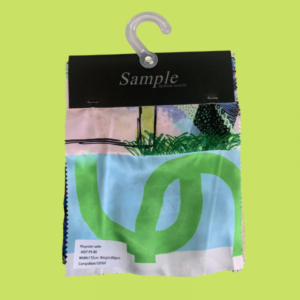 Custom fabric sample packSale Product on sale
Custom fabric sample packSale Product on sale€ 37.67€ 9.32 -
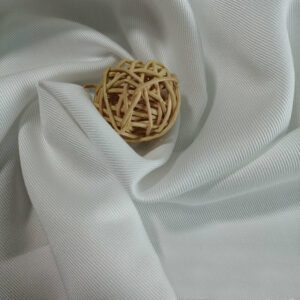 Custom print 40s tencel twill fabric by the yardSale Product on sale€ 4.88 – € 11.30
Custom print 40s tencel twill fabric by the yardSale Product on sale€ 4.88 – € 11.30 -
 16mm silk satin digital printing by the yardSale Product on sale€ 17.73 – € 34.84
16mm silk satin digital printing by the yardSale Product on sale€ 17.73 – € 34.84 -
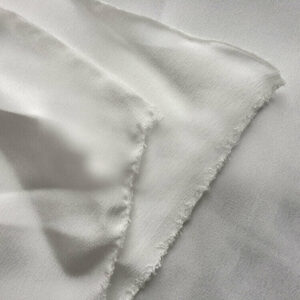 16mm silk crepe de chine custom printSale Product on sale€ 17.73 – € 34.84
16mm silk crepe de chine custom printSale Product on sale€ 17.73 – € 34.84 -
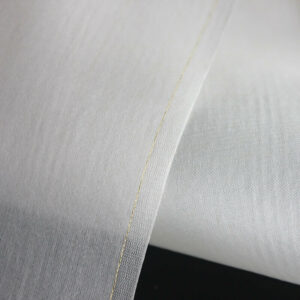 8mm silk organza personalized printingSale Product on sale€ 11.08 – € 23.54
8mm silk organza personalized printingSale Product on sale€ 11.08 – € 23.54 -
 Custom rayon jersey knitting fabric by the yardSale Product on sale€ 6.47 – € 11.30
Custom rayon jersey knitting fabric by the yardSale Product on sale€ 6.47 – € 11.30 -
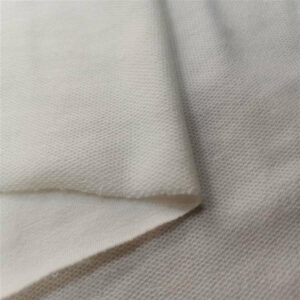 Custom rayon terry fabric by the yardSale Product on sale€ 7.09 – € 15.07
Custom rayon terry fabric by the yardSale Product on sale€ 7.09 – € 15.07 -
 30s rayon twill printing on demandSale Product on sale€ 3.81 – € 9.42
30s rayon twill printing on demandSale Product on sale€ 3.81 – € 9.42 -
 60s rayon voile custom printingSale Product on sale€ 3.11 – € 9.42
60s rayon voile custom printingSale Product on sale€ 3.11 – € 9.42

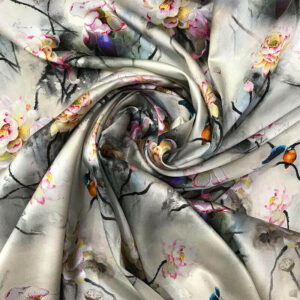
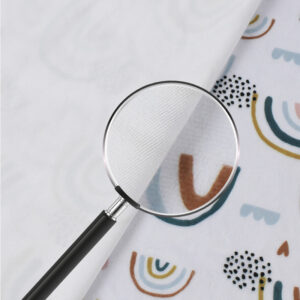
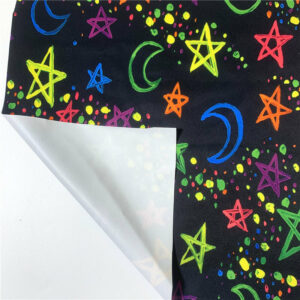

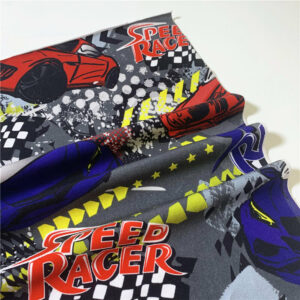
Leave a Comment